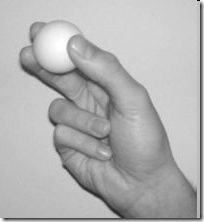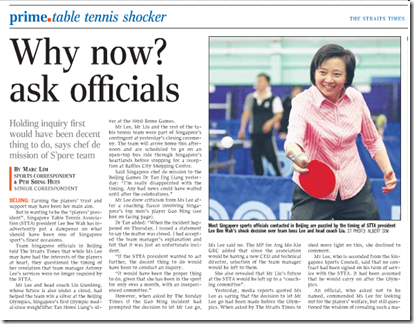Fiona Hamilton, London Correspondent
The claim, made on the world’s biggest stage about one of its most popular games, was a challenging one: that ping-pong was less a part of Chinese sporting history than of Victorian England’s.
Now Boris Johnson’s assertion in Beijing that the game started life as “whiff-whaff”, played on the dining tables of the upper classes, has drawn indignation of another kind — from game-makers and historians who accuse the Mayor of London of rewriting a small chapter of social history.
Joe Jaques, the commercial director of Jaques of London, the world’s oldest sporting and games manufacturer, told The Times that Mr Johnson had his facts “completely wrong”. He accused the mayor of doing his family a disservice by failing to acknowledge that they had been first to codify the game and had invented the name ping-pong years before whiff-whaff — devised by a business rival — was even thought of.
“I was quite outraged that he could get it so wrong and not give us the appropriate credit for it,” Mr Jaques said. “You would think that if he is going to be so proud of the sport, and tell the world that ping-pong is coming home, he could get his facts straight.”
Times Archive, 1901: Table tennis
In typically flamboyant fashion, Mr Johnson declared at the Olympics that it was a common misconception that table tennis had been invented in China. In comments broadcast widely across the world, the mayor said: “Ping-pong was invented on the dining tables of England in the 19th century and it was called whiff-whaff.
“The French might look at a dining table and see an opportunity to eat. We looked at it and saw the opportunity to play whiff-whaff. And I say to the Chinese, and I say to the world, ping-pong is coming home.”
However, according to Mr Jaques, whiff-whaff was a poor imitation of a game invented by John Jaques, his great-grandfather, and which was manufactured many years earlier.
There is much speculation about the origins of ping-pong. Some historians believe that the game was derived from outdoor tennis. Others say that it was originally played by British soldiers in India.
However, the Jaques family claim that they commercialised the game, providing nets, balls, bats and formal rules. Mr Jaques said that the game was originally called gossima and was produced by Jaques of London from 1891, using a cork ball and bats coated with pigskin.
“The story about India was an old wives’ tale because it was only played there with cigarette boxes and cork balls,” Mr Jaques said. “It was not until we patented gossima that the game was properly invented, because it actually had rules.”
While Mr Johnson’s performance drew hilarity from most of the world, Mr Jaques said that his family was extremely upset. “It’s very clear that we invented the game. It’s absolute rubbish to say that whiff-whaff came first. It was basically the same thing, but we were definitely first.”
Mr Johnson, who prides himself on his historical knowledge, was unrepentant yesterday. He said: “I stand by my assertion that whiff-waff and ping-pong are one and the same thing, with the ‘whiffs’ predating the ‘pongs’. Regardless of semantics though, it is a sport of which we should be proud and I look forward to watching it in 2012.”
Gerald Gurney, a sports historian and author of Table Tennis: the Early Years, said that Mr Jaques was right. “I have researched table tennis for 50 years, and you can only say that it was gossima and ping-pong first, whiff-whaff later.”
The Jaques game plan
— Established in 1795 by Thomas Jaques
— Despite numerous offers, is still family-owned and run
— Was the first manufacturer to make the Staunton chess set, made available in 1849. The style, named after the English chess master Howard Staunton, became the universal standard
— Introduced croquet into England in 1851
— Invented classic games such as happy families, tiddlywinks, ludo and snakes and ladders
— Still produces ping-pong bats and tables
Source: http://www.timesonline.co.uk/tol/news/politics/article4657126.ece











